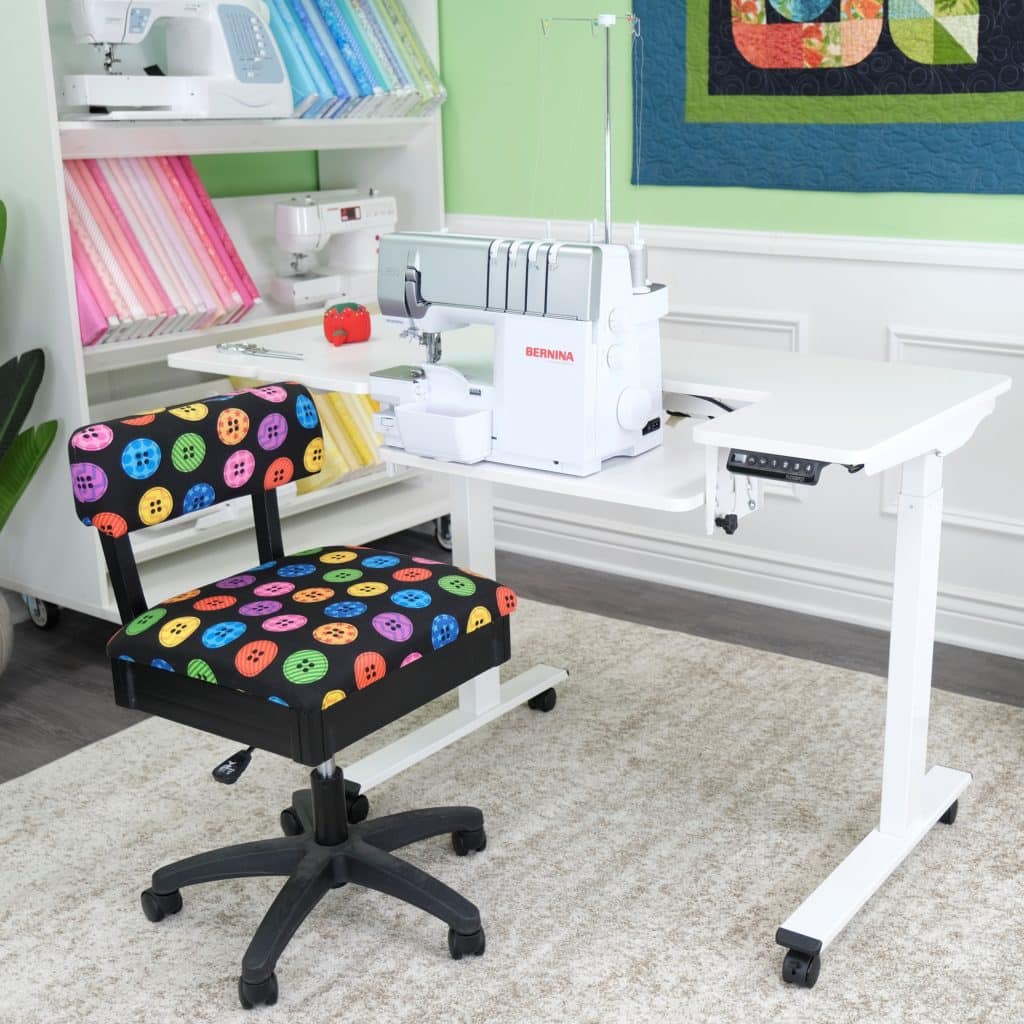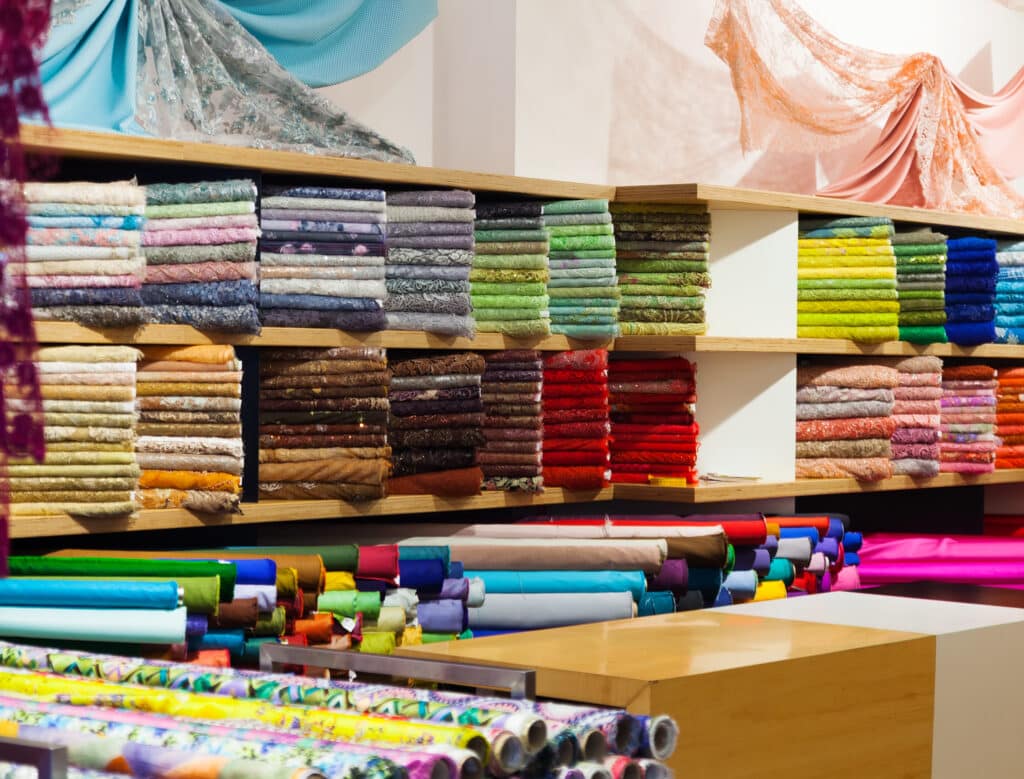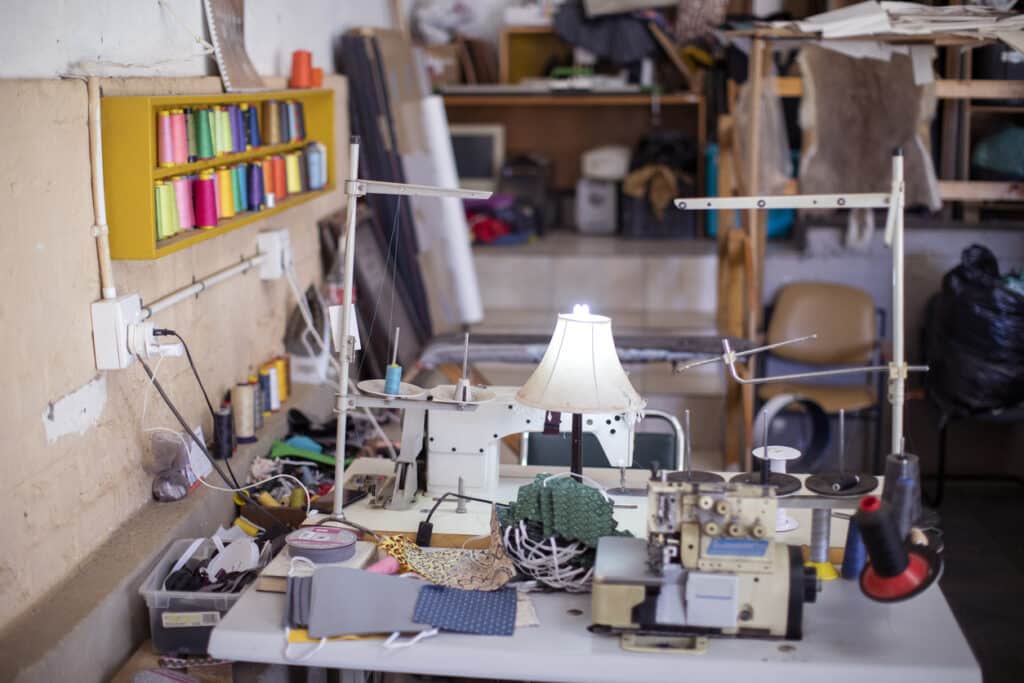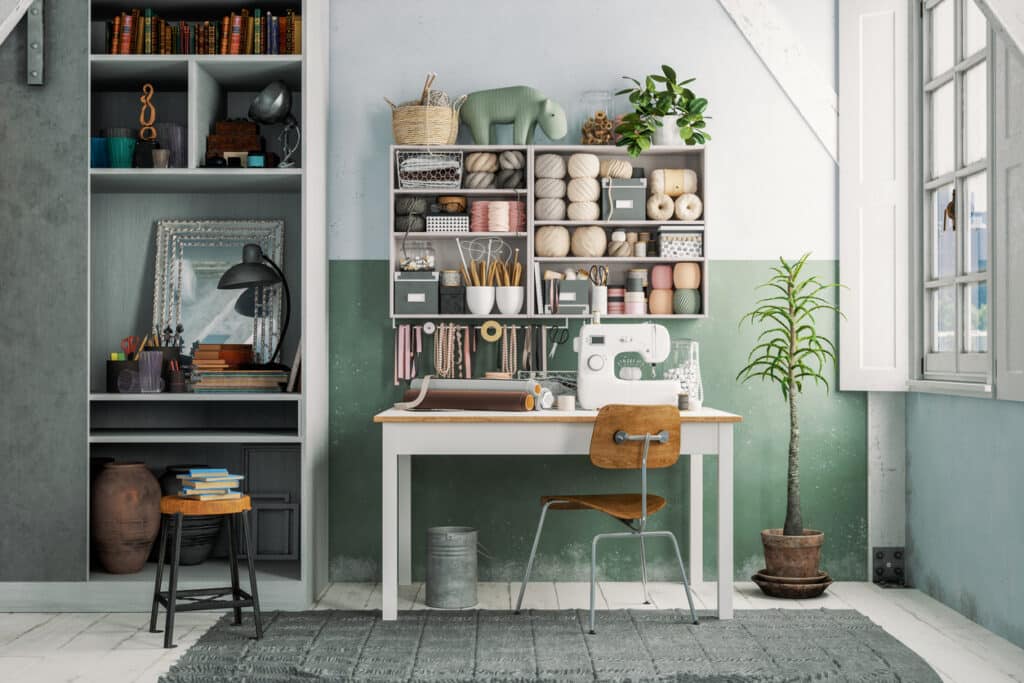In the sewing world, a well-organized space can catalyze creativity, increase productivity, and foster a seamless flow from one project to the next. Whether stitching together delicate fabrics or crafting intricate designs, your sewing room is the sanctuary where imagination comes to life. However, keeping this space tidy can seem daunting, with countless threads, needles, patterns, and materials to account for.
A meticulously organized sewing room doesn’t just simplify the crafting process; it offers many tangible and psychological benefits. A decluttered space minimizes distractions, allowing the mind to focus entirely on the project. With tools and materials systematically arranged, you’ll spend less time searching and more time sewing, accelerating your project completion rate.
Dive into our comprehensive guide on effectively organizing your sewing room, ensuring every tool and material has its rightful place, and discover how a clutter-free environment can elevate your crafting experience.
Assessing Your Sewing Space
The first step to organizing your sewing room is to assess the job ahead of you. Take a look at the space itself. How much room do you have? What kind of natural light is available? Where are the electrical outlets? Now take a look at what’s already in the space and think about your sewing style. How much clutter does your sewing space currently have? What do you need at your fingertips, and what can be stored away? Assessing your sewing space before organizing helps you break the job down into smaller chunks. Extra organizational tools and furniture for smaller spaces can help you mitigate clutter and help keep those creative ideas flowing.
Plan Ahead the Possibilities for Sewing Furniture
Consider your future sewing aspirations and any tools or equipment you’d like to incorporate in your sewing space. For instance, if you’re contemplating adding specialized sewing cabinets to your room, allocating space for them now will save you from completely revamping your sewing space – again – later. When it’s time to add dedicated sewing furniture for your workspace, knowing exactly how much space you have and how you want to use it makes setting up a breeze.
Assessing ahead of time also enables you to identify potential problems that could arise throughout the cleaning process. Perhaps it’s time to de-stash, but your pile of fabric requires meticulous sorting, or you might have a tangled mess of threads and notions complicating the process. Address these complex areas first, ensuring a smoother and more stress-free organization of the rest of your space.
Tactics to Organize Your Sewing Room
Many items cluttering your sewing space might be redundant, awaiting the right moment to be relinquished. Parting with non-essential items can be challenging due to the inherent belief that they might prove useful someday. Speculating a future need for these items can hamper decluttering. However, holding onto things based on potential utility can complicate organizing your sewing room.
To aid in this process, here are some organizational strategies specifically tailored to simplify the act of letting go in your sewing space:
- Start Small: Begin with a single drawer, shelf, or corner of a room. Overwhelming yourself can be counterproductive.
- The One-Year Rule: You probably don’t need it if you haven’t used or worn it in the past year. Consider letting it go.
- The Joy Test: This exercise was popularized by Marie Kondo. Ask yourself if the item sparks joy. If it doesn’t, it might be time to part with it.
- Take Photos: Before you start, photograph your space. As you declutter, the visual progress can be encouraging.
- The Replacement Rule: If you buy something new, consider eliminating something old.
- Rationalize Less: If you find yourself coming up with elaborate scenarios where you might need an item, you’re likely trying too hard to justify keeping it.
- Involve Others: Have a friend or family member assist. They might offer a more objective perspective.
One trick that helps beat the difficulties of letting items go is to sell or donate them. We can form emotional attachments to objects in our sewing room, making getting rid of them much more difficult. Identify
which items need to go, and donate them or put them up for sale. Giving your old sewing items to someone else feels much more fulfilling than throwing them away.

Creating Dedicated Zones
Effective organization in a sewing room hinges on a thoughtfully planned layout. You establish clear boundaries that foster functionality and organization by dividing your space into specialized zones, each tailored for a specific task such as cutting, pressing, or sewing. Designate areas for cutting, pressing, sewing, etc., and keep that area dedicated to that part of the job.
Adding Storage Units to Optimize Small Sewing Spaces
Having dedicated areas for the different steps of the process is possible even in the small craft rooms. Aligning storage with these zones ensures that items are easily accessible where needed.
As you draft your room’s blueprint, prioritize the placement of larger equipment. The positioning of sewing machines, cutting tables, and sewing chairs can influence the overall arrangement of your room. Think of how these substantial pieces complement one another, streamlining your zone-designation process.
Placing a “Vision Corner” – Where Ideas Start
Additionally, consider introducing an ‘vision corner’—a dedicated space brimming with inspiration. Use a cork board or peg board to pin up images, give yourself a space (and tools) to sketch out ideas, put up book shelves to store books, patterns, and magazines, and display objects and images that bring you inspiration and spark creativity. This is a great space to get those creative ideas out of your head and onto the wall, where they can grow and evolve.
Storage Solutions
When looking for practical storage options, consider what you already have available. Maximize the potential of existing shelves, dressers, and cabinets in your sewing room by grouping tools and equipment. Consider what items you will want close at hand every time you sit down to sew, and store them so that they’re easily reached from your sewing chair. For items that are used less frequently, categorization is your friend. Plan to store similar items together, and keep related sewing tools and equipment near one another so they’re readily accessible when needed and easy to store away when you don’t. Whether you choose to use shelves or drawers is a personal decision. Some sewists like being able to see everything they have on open shelving, while others like to keep things tucked away out of sight.
Creating Organization through Building Habits
Having dedicated storage spaces and storage containers in your sewing room can inspire further organization and cleaning habits. The easier it is to store items, the less daunting it will be to keep your sewing room organized in the future. Choose appropriate storage options for various items that make storing things away after use more convenient.
If you’re in the mood for a creative project that doubles as a practical solution, consider crafting your own storage aids. DIY ventures like floating shelves, magnetic strips, pegboards, hanging mason jars, and corner shelves offer functional storage and add a personal touch to your sewing space, especially when working with limited room.
Organizing Sewing Tools and Notions
While the big picture of sewing room organization is essential to get you started, touching on the minor details makes your sewing room shine. Let’s talk about organizing your sewing accessories, tools, and notions.
A cornerstone of seamless sewing room management is compartmentalization. Using containers to keep small sewing tools and notions (think needles, threads, and buttons) separate from one another and easily accessible will be a lifesaver down the road. Ensuring these items are easily visible and within arm’s reach streamlines the sewing process.
Opting for clear compartments or specially designed sewing organizers enhances both the efficiency and accessibility of your space, offering straightforward solutions for tool and notion storage.
Managing the Fabric Stash
After a while, piles of fabric and fabric scraps will build up throughout the sewing room. It’s inevitable, and it happens to the best of us. Managing and storing your fabric stash can be one of the most daunting tasks when organizing your sewing room. However, some techniques can make it a satisfying experience and help improve the accessibility of your fabrics when you’re sewing.
Sewing Room Fabric Storage Tips
Categorize by type or intended use: some sewists like to keep quilting fabrics separate from costuming fabrics separate from home decor fabrics, while others like to categorize by color, fiber content, or weight. Choose a categorization method that works for you and your style.
- Standardize folding techniques: Just like you tend to fold all your bath towels the same way so that they fit well into your linen closet, it’s a good idea to standardize how you fold your fabric. Having a consistent method will help you store your fabric in a way that fits with your space and allows you to see what you’ve got.
- Avoid overfolding and stubborn creases: You may have to adopt a couple of different standardized folding practices, depending on the size of your fabric cuts and how heavy the fabric itself is. Overfolding can cause your fabric to come unfurled and leap off your shelf or out of your drawer when you’d prefer it just stay put, and cramming overfolded fabric into a too-small drawer can set in stubborn wrinkles and creases, not to mention the risk of damaging more delicate fabrics.
- Use clear storage bins or vertical storage methods: Being able to see what you’ve got sure helps get those creative projects off the ground! Clear storage bins help with that, as well as using your vertical space to both store and display fabrics, tools, and notions.
- Color coding and proper labeling: even with clear storage containers, careful folding, and thoughtful categorization, there will always be tools that must be stored away and out of sight. Consider color coding your tools and notions based on use, or at the very least, invest in a labeling system. Your labels can be as simple as permanent marker written directly on the side of your storage container or as fancy as your imagination demands. The most important thing is that you are able to find your tools when you need them!

Take Your Organization to the Next Level with an Inventory System
Implementing an inventory system for your fabric collection can be a game-changer in enhancing accessibility. By documenting where each fabric is stored, you can swiftly locate what you need, eliminating the guesswork and the endless scanning of colorful piles. No more time wasted staring at the wall of colors and hoping the right one will jump out to you! Some sewists use a computer spreadsheet to keep track of what they have, when they bought it, and from where, but no real computer database savvy is necessary; you can just as easily keep track in a notebook or even scrawled out on a chalk board in your space.
Organizing fabric in your sewing room also means removing the scraps and unwanted patterns. It can be tempting to keep hold of the unique fabric that you’re certain will one day finally be used – but there’s always the sad possibility that it’s just taking up space. Avoid fabric hoarding and maintain a curated collection of pieces you know will be used. For the fabric you can’t use, don’t let it go to waste – you can sell or trade your fabric stash away, or you could donate it to a non-profit. There are many charity organizations with volunteers who sew and quilt for those in need. Check with your Local Fabric Store for information and donation opportunities in your community.
Thread and Bobbin Organization
Organizing your threads and bobbins efficiently can significantly enhance your sewing experience. Start by sorting threads based on color and type. This systematic approach allows you to quickly identify and select the right thread, ensuring consistency and quality in your projects.
For bobbins, effective management is crucial to prevent tangles and maintain order. Consider utilizing bobbin holders or dedicated bobbin storage boxes. These tools not only help in keeping bobbins separated but also protect the thread from dirt and wear.
By selecting the suitable storage method for your sewing environment, you ensure that your threads and bobbins remain organized, easily accessible, and in prime condition for future use.

Keeping a Clean and Tidy Sewing Room
As much as we would like it to be, organizing a sewing room isn’t a one-and-done activity. Creativity is messy! As you immerse yourself in your projects, clutter tends to accumulate. Too bad it’s so much quicker and easier to disorganize than it is to organize! Luckily, investing just a few minutes in tidying up post-sewing can spare you hours of organizing later on. Consistent short bursts of cleaning prove more manageable than an intensive day-long session, and are far less overwhelming.
Tidy as You Go
One way to maintain a clutter-free workspace is to incorporate a tidying-up routine into your sewing rhythm. An incorporated routine will help you manage your time and optimize your cleaning process. Without a routine, it can feel like a mess of small tasks you must tackle that can become overwhelming. By implementing a habit of cleaning up as you go, you can easily break down the cleaning process of your sewing room into manageable subsections that shorten the time spent cleaning.
Here are a few tips for quick and easy cleanup after sewing projects:
- Magnetic Quick-Pick: Keep a magnetic wand or tray handy. This is especially handy for quickly finding and picking up all those wandering pins.
- Immediate Waste Disposal: Position a waste bin or container close to your work area. You can even sew a scrap receptacle that hangs just where you need it.
- Transparent Organization: Use clear storage containers to store leftover materials and tools.
- Spot Maintenance: After every task, spend a minute tidying up your main equipment or workspace.

Plan Your Organizational Process Over Time
One of the best tips to help you manage the organizational process is to plan for the future and prepare for future reorganization time. Over time, your sewing tool arsenal will grow as you delve deeper into the sewing world. Your sewing room might start running out of space again as you expand your toolkit, so always be prepared for another reorganization day!
In the realm of sewing, organization is more than an aesthetic choice—it’s a foundation for optimal performance and learning. Through this guide, we’ve underscored the importance of a systematic sewing room, highlighting its role in fostering an environment conducive to creativity and efficient work. An organized space minimizes distractions, reduces time spent hunting for tools and materials, and, crucially, facilitates a smoother learning curve for beginners and seasoned sewists alike. By implementing these organizational strategies, you’re not just tidying a room but cultivating a dynamic classroom where each project offers richer insights and greater mastery.
